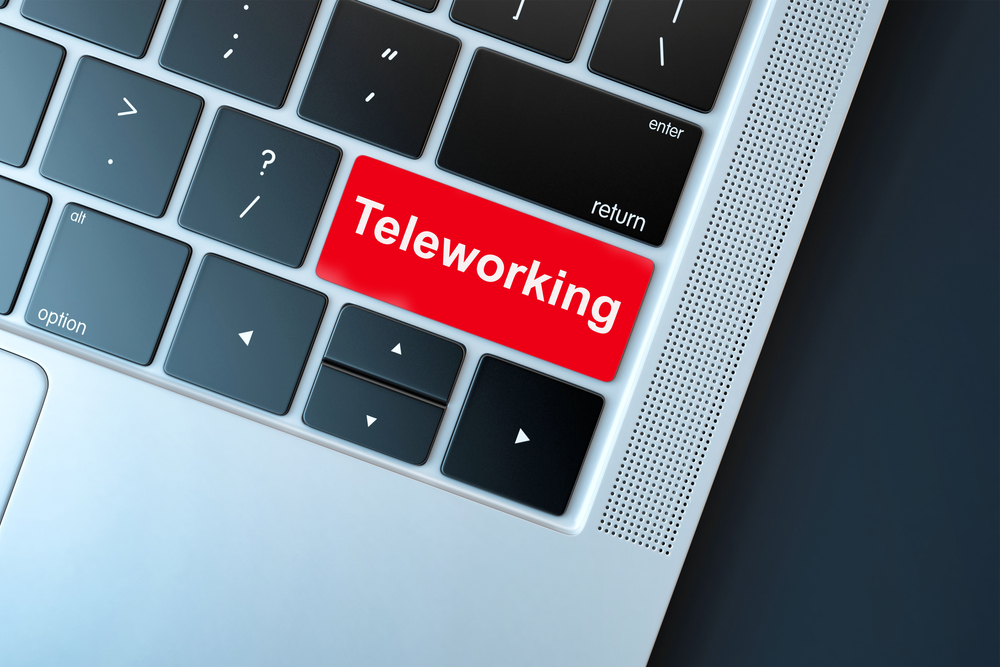
How To Manage Teleworkers?
July 3, 2020
4 Things Your Web Filtering Solution Should Do
July 17, 20206 Tips for Successful Remote Employee Management

Whether you’re new to the remote workplace or a veteran to a virtual office, by now you’ll have discovered that telecommuting comes with a unique set of challenges. With employees worldwide forced to work temporarily from home during the Covid-19 crises, many companies will continue working remotely or using a hybrid model.
Successfully managing your remote team doesn’t have to be overwhelming. Take a look at some simple ways to improve communication, increase productivity, and prevent security risks with your remote team.
1. Prioritize effective communication
The communication issues that come with telecommuting are cited as the most common hurdle for remote employees.
Whether your entire operation is now offsite or you’re working off a hybrid model, keeping everyone in the loop is critical for:
- Accurate project updates
- Following or giving directions effectively
- Gauging office productivity
- Addressing employee concerns
- Scaling and building your production pipeline
Knowing where everyone stands in their task lists, what challenges they’re facing, and whether they have any questions or concerns about the project at hand are all important ways to streamline any workplace.

2. Prevent FOMO (Fear Of Missing Out)
It might not seem like a huge priority in the beginning, but transitioning to a remote workplace can cause employees to feel disconnected and swept aside by the organization. It’s important to make every employee aware of their contributions to the team, as well as their strengths and role in the company as a whole.
Using your new tools to streamline effective communication will improve collaboration across your remote and in-house teams. This will help to foster a virtual work environment that mirrors a positive in-office culture.
Research shows that human interaction can actually contribute to a person’s feelings of self worth and confidence, as well as their physical health. Feeling “included” is more than being invited to your coworker’s house party. It’s a fundamental building block of any company culture that catalyzes growth and positive development for its staff.
Creating a culture that facilitates inclusiveness and collaboration can improve your company’s:
- Retention rate
- Projected revenue generation
- Consumer pipeline
- Overall reputation as a responsible employer
It might seem like a small gesture, but just the act of making daily interactions easier and more seamless for your staff can go a long way. The more simple the process, the higher the participation rate will be.
Use interactive programs like video and chat to stay in touch with your team, and you can also hold more casual meetings like weekly check-ins – or even virtual happy hour. These small gestures can go a long way with telecommuting teams.
3. Take advantage of creative collaboration tools
Collaboration usually involves more than a few emails or a quick video chat. It’s an atmosphere you create for your entire staff that includes:
- Brainstorming
- Breaking down individual tasks, outlining everyone’s role in the “big picture”
- Ensuring equal participation
- Addressing employee concerns
- Facilitating transparency and building workplace morale
Using a computer monitoring software to streamline task management is a great way to improve office-wide collaboration. Using interactive software elements like real-time reporting, instant chat, and employee timekeeping will help you determine redundancies and staffing issues, assisting with reorganization and group-based planning.
These tools are helpful for creating an effective organizational plan that plays on everyone’s strengths, improving collaboration office-wide.

4. Use data reporting
Objective data is key for any new software or system, especially if you’re responding to a major shift like a complete office reorganization. When your staff is working offsite, accountability becomes even more important if you want to keep production from dropping during the transition.
Time tracking and reporting tools are perfect for accurately monitoring employee activity while removing the element of human error. You’ll also prevent unreliable information like hearsay or rumors from infecting the structure of your virtual office.
Employee monitoring also helps to keep your remote workplace more secure, preventing both internal threats and third-party breaches. Tracking user behaviors like browsing history, downloads, and external devices can save your company from falling victim to cybercrime.
Utilizing computer monitoring software to objectively track employee activity takes away the guesswork and will make telecommuting a breeze for even the most difficult employees.
5. Make adjustments as needed
No matter how prepared your team was for their offsite move, you can surely expect some hiccups to arise. When this happens, flexibility is critical to prevent an even bigger crisis.
Many employees have been jettisoned into the remote workforce following COVID-19, and we’re all learning about this unprecedented situation as we go along. As a result, successful remote managers need to remain adaptable and ready to adjust their business plans and tools to fit the current landscape.
This is also important for your employees since they’ll be looking to you as a voice of reason and source of information during this time.
Regularly review user reports and check in with your staff periodically to address any issues they might have with their new workspace, digital tools, or protocols. Solve issues in even less time using communication and reporting tools like:
- Video recording and screen share
- Accurate employee timekeeping
- Real-time alerts
- File activity monitoring
- Internet usage tracking
Reviewing user activity is an easy, headache-free method for performance tracking and risk prevention for any company size.
6. Be available for your team
The keys to any seamless software rollout are patience, and a major part of that is making yourself available to the concerns and questions your staff might have. Let them know that you’re there to help them through the transition, rather than setting them up to sink or swim.
Knowing that you’re open and available for their requests will make employees more comfortable with asking for help. This will prevent hurdles in the long run as issues will be addressed in a more timely manner.
The quicker your employees adjust to their new telecommute environment, the smoother the entire process will be. As with any major initiative, keeping an open mind is critical for your organization’s success.
Contact us today to learn how InterGuard could be your solution for remote employee management.



